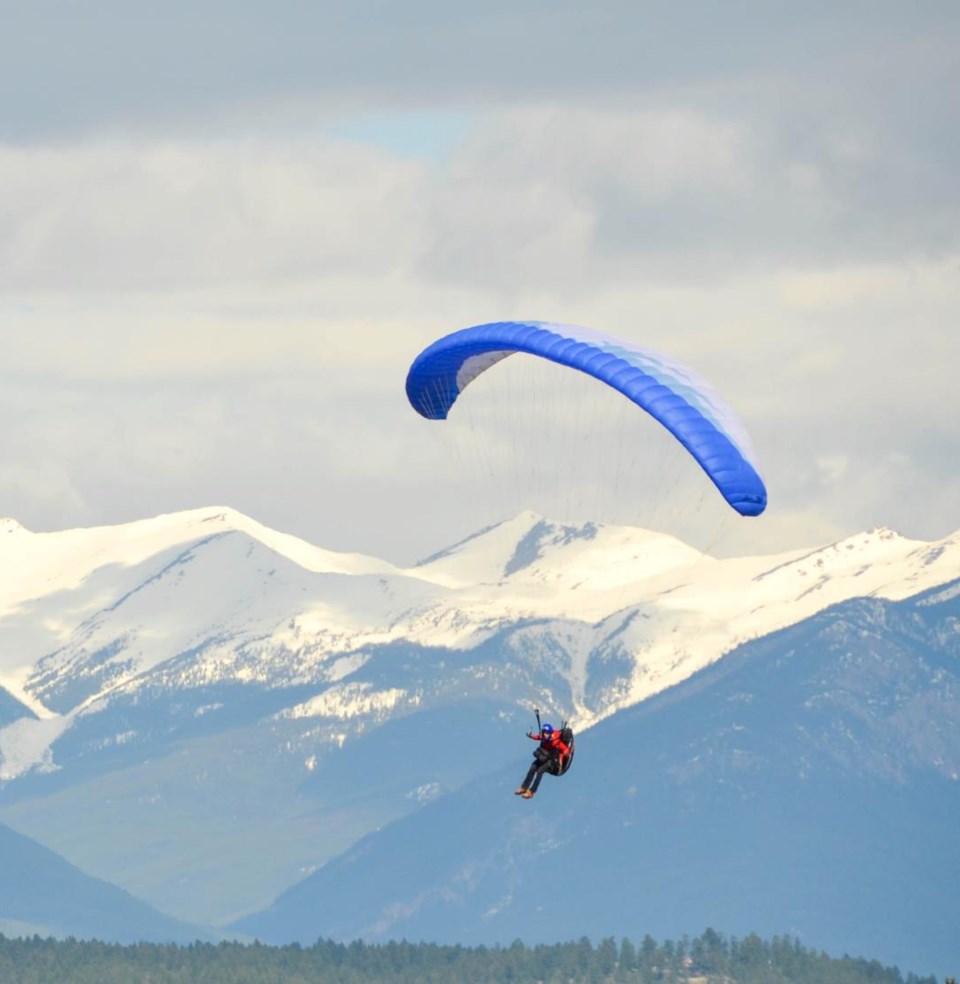Scott McKay is a hobbyist paraglider born in Calgary, living in Canmore, who has over ten years of experience flying in Rocky View County and the Rocky Mountains. He has accumulated several essential tips to help anyone begin soaring the skies.
McKay explained that he was brought to paragliding naturally through his love for the outdoors and adventure as a tenured ice climber, hiker, and rock climber. He also has a bachelor's degree of science and geography, and studying climate along with landform processes piqued his interest in flying.
“If you're good at predicting where air is going to move, it can make you a really good paraglider,” said McKay. "You’re able to find air that is going up, and go high, and fly far."
“Thermals,” or columns of warm, rising air, are what paragliders use to gain elevation. With experience, McKay said a pilot can detect a thermal by feeling a strong lift and then proceeding to tighten their trajectory into a turn to rise with the column of air.
However, beginning the sport of paragliding is more than just putting on a glider, akin to a parachute, and jumping off a mountain.
McKay described how research and education is extremely important before even making a first purchase, and for Rocky View County residents, McKay recommends Muller Windsports in Cochrane for paragliding training; and even for veteran paragliders to touch up their skills.
“Muller Windsports has a long history teaching folks to paraglide, hang glide, kite surf, and more of that kind of thing,” said McKay. “They do a really great job.”
The fundamentals of paragliding can be mostly applied to any elevation and setting due to the nature of airspace according to McKay, as it is similar to piloting a small aircraft. Although paragliders are free-footed in a small seat with just a glider to control, they are still part of air traffic.
Whether gliding down a small hill or descending a towering mountain, paragliders must tweak and steer their direction in response to the air around them at all times. No trip is identical according to McKay, but sometimes, Mother Nature has different ideas.
“I'm passionate about the sport, but sometimes as a hobbyist it can also be a frustrating activity too,” said McKay. “You know, you plan to go flying and the weather's not good or it's too windy, and it can be tough around these regions because the conditions are always super unpredictable year round.”
Safety is always the number one priority when paragliding, and there are many tools to help a paraglider once they are ready to begin their trip.
The most essential pieces of equipment include a helmet, compass, boots, gloves, goggles, harness, and a reserve parachute to ensure your comfort and safety in the sky. McKay also described an essential tool called a variometer which measures change of altitude by change in air pressure.
Once educated and set up with the proper equipment that can range from $5,000 to $10,000 in total, the next step is to know the rules of airspaces, according to McKay.
“You have to keep an eye on airspace rules and what goes with provincial land, so you need to do your homework to ensure that you're not violating any National Park or land regulations,” said McKay. He added that it is imperative to find a safe, flat, and wide space to land before you launch as well.
Flight times can vary from 15 minutes at small courses to over five hours according to McKay, and he explained that the feeling of gliding over the mountains and prairies has given him a new perspective on our land that he never could have imagined.
“There's a tight knit group of folks who fly that meet up, whether it be West of [Canmore], Cochrane, or B.C., and there's something so special about hiking and launching off a peak above the town you live in and sharing that experience with other flyers,” said McKay.
For more information on Alberta paragliding, please visit the Alberta Hang Gliding and Paragliding Association website: albertafreeflight.ca



